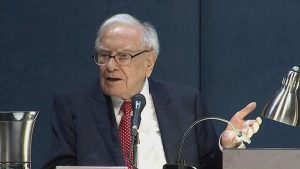Eddy Lazzarin, CTO of Andreessen Horowitz, recently compared meme coins to “Risky Casinos,” arguing that they deter genuine builders from the crypto ecosystem due to the high risk involved. Lazzarin expressed his concern that meme coins hinder the long-term vision of cryptocurrency and have the potential to give ammunition to politicized regulators. He emphasized the importance of real products and protocols developing in the end to sustain the growth of the industry and retain original builders. Despite the popularity of meme coins, Lazzarin questioned their place in more mainstream cryptocurrencies like Bitcoin.
While Lazzarin criticized meme coins as risky and potentially damaging to the industry, a recent report suggests that hedge funds are being drawn towards meme coins due to the potential for significant returns. This has resulted in newer meme coins experiencing substantial growth and impressive returns despite being relatively new to the market. For example, The Book Of Memes (BOME) saw a 30,000% surge in its price and a billion-dollar market capitalization within a week of its launch, even before its release on centralized exchanges. Similarly, Dogwifhat (WIF) became the third largest meme coin with a market cap surpassing $3 billion after its launch in November 2023.
However, not all meme coins have fared well post-release, with some experts criticizing them for lacking real-world value. Despite some meme coins achieving mainstream popularity and attracting inexperienced traders with promises of turning small investments into multi-millions, several have been involved in orchestrated rug pulls or dumped on the market immediately after launch. These stories of quick riches have lured many inexperienced traders into the crypto market, only for them to lose their funds in pursuit of an unrealistic dream. The volatility and risk associated with meme coins have raised concerns within the crypto community about their long-term sustainability and impact on the industry as a whole.
The executive team at Andreessen Horowitz, including Lazzarin, received criticism from the meme coin community for their stance on meme coins and their potential negative impact. Despite this, Lazzarin reiterated his belief in the importance of real products and protocols for the long-term growth and success of the cryptocurrency space. He expressed optimism that interest in meme coins will ebb and flow, but ultimately, it is the development of genuine products and protocols that will drive the industry forward. With the surge in interest and investment in meme coins, it remains to be seen how they will continue to evolve and whether they will find a more established place alongside mainstream cryptocurrencies like Bitcoin.
In conclusion, meme coins have emerged as a controversial and divisive trend in the cryptocurrency market. While some see them as a potential source of extraordinary returns and growth opportunities, others view them as risky investments with little real-world value. The debate surrounding meme coins highlights the broader challenges in the crypto industry around investor education, risk management, and long-term sustainability. As the industry continues to evolve, it will be important for investors, builders, and regulators to carefully navigate the risks and opportunities presented by meme coins and other emerging trends in the crypto space.















